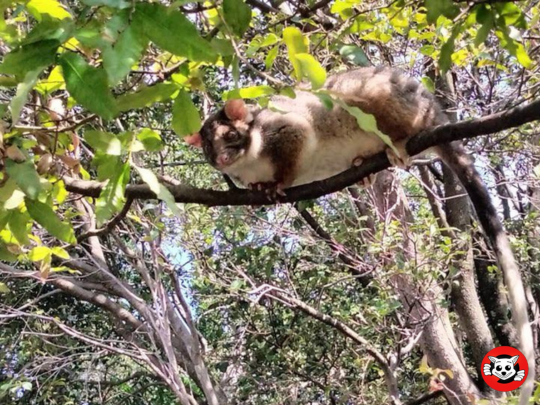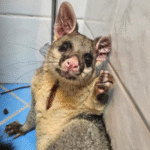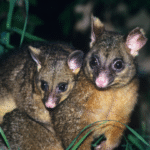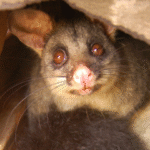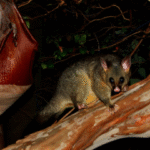Maintaining the health and vitality of your trees is a crucial aspect of property upkeep. Yet, this can pose a challenge when managing possum habitation.
We delve into effective strategies for keeping your trees robust and healthy without inadvertently rolling out the welcome mat for possums. Through proper tree care, you can enhance the longevity of your greenery and simultaneously play an integral role in regulating possum activity.
Selective Pruning Techniques
Pruning is an essential aspect of maintaining the health and aesthetics of your trees, but it can also be a strategic method for managing possum populations. As a homeowner, adopting selective pruning techniques can help you balance maintaining tree health and minimising possum access.
When considering pruning, focus on overhanging branches that provide easy access to your home for possums. However, considering the tree’s overall health, this must be done carefully.
The objective is to create enough distance between the tree and your home that possums cannot easily jump across. This requires a delicate balance, as removing too much foliage could compromise the tree’s health by reducing its photosynthetic capacity and making it more vulnerable to disease and pests.
Additionally, proper pruning practices are crucial. Always use sharp, clean tools when pruning your trees. Dull or dirty tools can cause unnecessary damage to the tree and may spread diseases or pests. After each cut, clean your tools to prevent potential cross-contamination.
Avoiding Overhanging Branches
In addition to selective pruning, regularly inspecting your property for overhanging branches can significantly minimise possum access to your home. Overhanging branches act as bridges for possums, allowing easy access to your roof and potentially into your home.
Trimming these branches not only deters possums but also contributes significantly to the overall health of your trees. Overcrowding branches can result in unhealthy trees that are more susceptible to disease. It can also hinder sunlight penetration and air circulation, both critical for tree growth and vitality.
Regular trimming promotes better air circulation and sunlight penetration, leading to healthier, stronger trees. This adds aesthetic value to your property and creates a more balanced ecosystem supporting wildlife.
Installing Possum-Proof Barriers
If you’re a hands-on homeowner who enjoys getting involved in maintaining your property, consider installing barriers like metal bands around the trunks of your trees. These barriers are a physical deterrent, preventing possums from gaining the height they need to jump onto roofs or balconies.
When installing these barriers, it’s essential to ensure that the tree is isolated from other trees, fences, or walls that possums could use as an alternative access point. Possums are resourceful creatures, and eliminating all potential access points is the key to effective possum management. While this might seem daunting, remember that every step you take contributes to protecting your home and preserving the natural environment.
Appropriate Fertilisation Practices
Fertilisation is a fundamental aspect of tree care and health. The right balance of nutrients can significantly enhance tree growth, improve disease resistance, and increase overall vitality. However, the relationship between fertilisation and possum management requires careful consideration.
Possums are attracted to lush, over-fertilised foliage, which can serve as a food source. Therefore, while tending to your trees, using enough fertiliser to maintain their health is critical without encouraging excessive and rapid growth that may draw in possums.
Regular monitoring of your trees is key to applying this strategy effectively. Look for signs of nutrient deficiencies or disease, such as discoloured leaves, stunted growth, or unusual leaf drop. These signs can indicate when additional fertilisation is needed. At the same time, be mindful not to over-fertilise, as this could lead to dense, lush growth that could attract possums.
Adjust your fertilisation practices based on these observations, considering the specific needs of different tree species. Some types of trees require more nutrients than others, so it’s essential to understand the individual requirements of each tree in your garden.
Remember, a well-maintained garden is aesthetically pleasing and integral to effective possum management. By adopting appropriate fertilisation practices, you can ensure the health of your trees while minimising the risk of attracting possums.
Using Possum-Resistant Plant Species
Plant selection is another crucial factor in managing possum populations within your property. If you’re planning a new garden or considering adding new plants to your existing one, consider choosing less attractive species to possums.
There are many beautiful and resilient plant species known to be less appealing to possums due to their taste, smell, or texture. These include plants with strong odours, bitter tastes, or prickly leaves that possums tend to avoid.
Incorporating these possum-resistant species into your garden can help deter possum activity, reducing the likelihood of them causing damage or becoming a nuisance. Additionally, these plant species can add visual interest and diversity to your outdoor space, enhancing its aesthetic appeal while serving a practical purpose.
Install A Possum Box
Among the many strategies to keep trees healthy without attracting possums, one benefits your greenery and contributes positively to the local ecosystem. It involves installing a possum box in a tree in your yard. This might seem counterintuitive; aren’t we trying to keep possums away? However, this strategy is quite effective.
Possums are creatures of convenience that seek out warm, safe places to call home – which, unfortunately, can often be in your roof. By providing them with a suitable alternative in the form of a possum box, you redirect these critters away from your house while still giving them a place to live.
This approach allows you to maintain the health and integrity of your trees, minimise potential roof damage, and contribute to the welfare of local wildlife all at once. Remember, possums play a vital role in our ecosystem by controlling pests and spreading seeds, so helping them find a home in your yard, not in your roof, can be a win-win solution.
Effective management of possum populations while ensuring the health and vitality of your trees is a delicate balancing act that requires careful thought and strategic measures. The strategies discussed, including selective pruning, appropriate fertilisation practices, avoiding overhanging branches, using possum-resistant plant species, and installing a possum box, offer homeowners practical ways to enhance their green spaces and minimise possum-related issues.
Remember, it’s not about eradicating possums but cohabiting responsibly and harmoniously with them. Services like Possum Busters are available for humane removal and rehoming of possums when necessary, ensuring the well-being of your trees and the local wildlife.

